Moritz A. Graule
GG-LLM: Geometrically Grounding Large Language Models for Zero-shot Human Activity Forecasting in Human-Aware Task Planning
Oct 30, 2023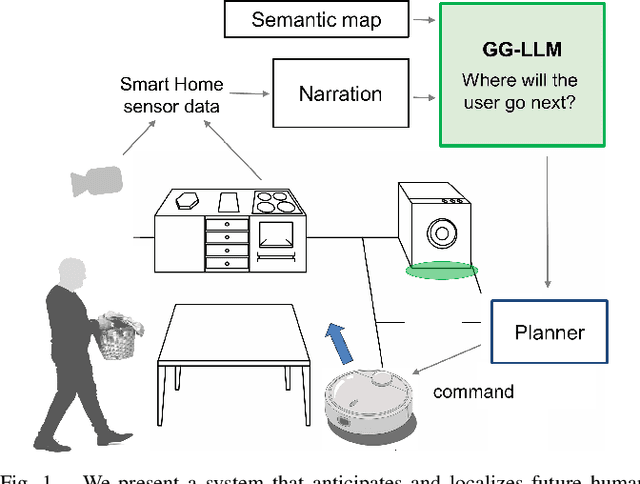
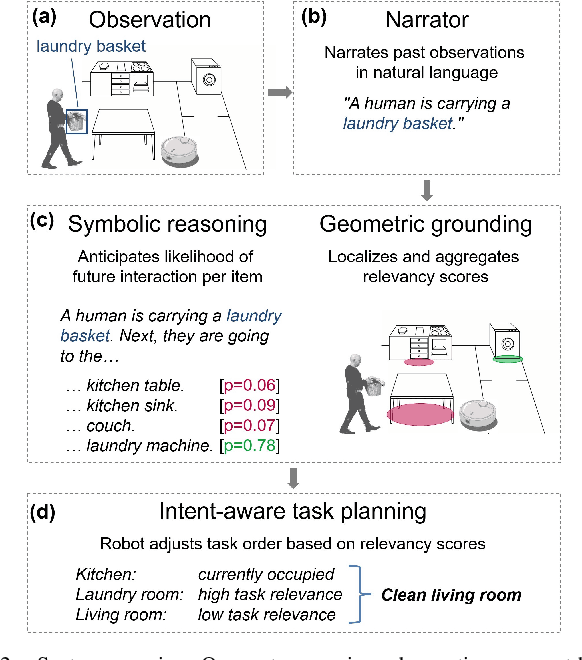
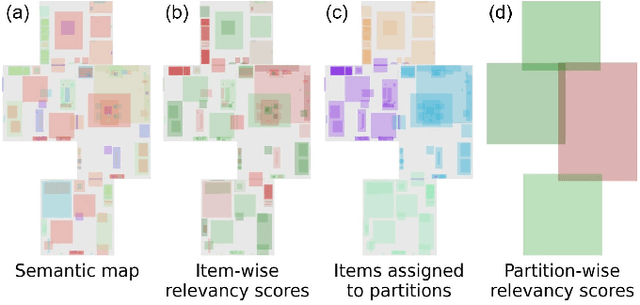
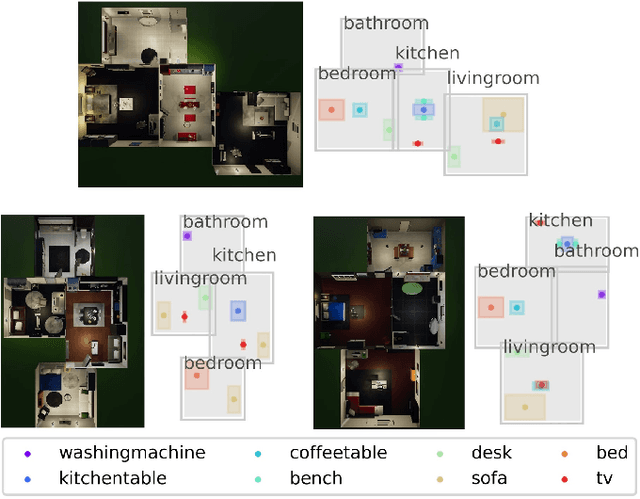
Abstract:A robot in a human-centric environment needs to account for the human's intent and future motion in its task and motion planning to ensure safe and effective operation. This requires symbolic reasoning about probable future actions and the ability to tie these actions to specific locations in the physical environment. While one can train behavioral models capable of predicting human motion from past activities, this approach requires large amounts of data to achieve acceptable long-horizon predictions. More importantly, the resulting models are constrained to specific data formats and modalities. Moreover, connecting predictions from such models to the environment at hand to ensure the applicability of these predictions is an unsolved problem. We present a system that utilizes a Large Language Model (LLM) to infer a human's next actions from a range of modalities without fine-tuning. A novel aspect of our system that is critical to robotics applications is that it links the predicted actions to specific locations in a semantic map of the environment. Our method leverages the fact that LLMs, trained on a vast corpus of text describing typical human behaviors, encode substantial world knowledge, including probable sequences of human actions and activities. We demonstrate how these localized activity predictions can be incorporated in a human-aware task planner for an assistive robot to reduce the occurrences of undesirable human-robot interactions by 29.2% on average.
Incorporating Interpretable Output Constraints in Bayesian Neural Networks
Oct 21, 2020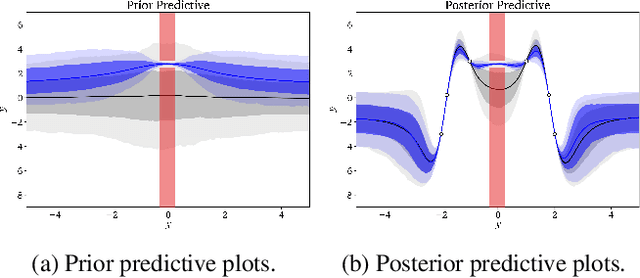



Abstract:Domains where supervised models are deployed often come with task-specific constraints, such as prior expert knowledge on the ground-truth function, or desiderata like safety and fairness. We introduce a novel probabilistic framework for reasoning with such constraints and formulate a prior that enables us to effectively incorporate them into Bayesian neural networks (BNNs), including a variant that can be amortized over tasks. The resulting Output-Constrained BNN (OC-BNN) is fully consistent with the Bayesian framework for uncertainty quantification and is amenable to black-box inference. Unlike typical BNN inference in uninterpretable parameter space, OC-BNNs widen the range of functional knowledge that can be incorporated, especially for model users without expertise in machine learning. We demonstrate the efficacy of OC-BNNs on real-world datasets, spanning multiple domains such as healthcare, criminal justice, and credit scoring.
Output-Constrained Bayesian Neural Networks
May 15, 2019


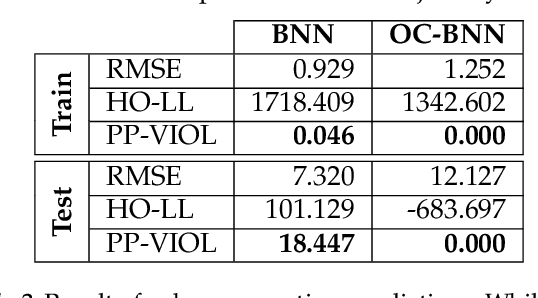
Abstract:Bayesian neural network (BNN) priors are defined in parameter space, making it hard to encode prior knowledge expressed in function space. We formulate a prior that incorporates functional constraints about what the output can or cannot be in regions of the input space. Output-Constrained BNNs (OC-BNN) represent an interpretable approach of enforcing a range of constraints, fully consistent with the Bayesian framework and amenable to black-box inference. We demonstrate how OC-BNNs improve model robustness and prevent the prediction of infeasible outputs in two real-world applications of healthcare and robotics.
 Add to Chrome
Add to Chrome Add to Firefox
Add to Firefox Add to Edge
Add to Edge